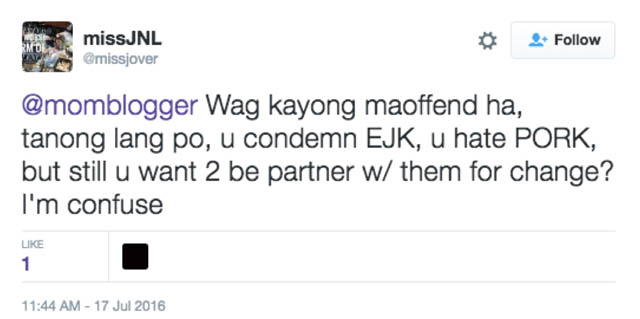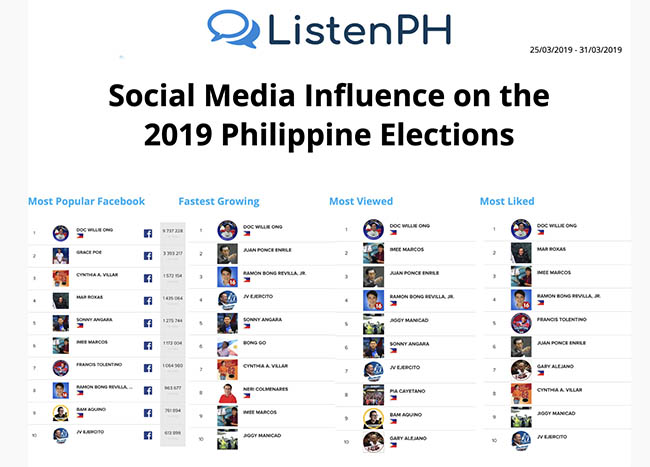Meet the 8 common troll strategies
Trolls have always been around in the early days of the internet. Before the advent of Facebook and Twitter in the Philippines, a blog was the most popular social media platform. I had my fair share of mean-spirited bloggers in 2007. Negative responses is expected when opinions vary . Some are just criticisms, but others are mean spirited and nasty. I recall my blog post on “The Mean-spirited Commenter and Blogger” where I asked “Do you think these mean-spirited last long in the blogosphere? (By definition, mean-spirited means having or characterized by a malicious or petty spirit.)” True enough, nine years later, I don’t see them blogging actively. Take comfort in knowing that nasty behavior can only hold an audience for a short period of time.
Trolls are known for their rude, vile, and offensive behavior. They cause untold mental stress and grief to their victims. These are the faceless trolls that have been abusing internet users and wreaking havoc in cyberspace. Facebook pages, Twitter feeds, and online forums all share a slew of these mean beings.
READ: Positive Engagement In The Era of Trolls
READ: How to Negate the Influence of Trolls In Our Kids
According to Life Hacker, the word “trolling” comes from a fishing technique in which one casts out bait to catch the fish—and that’s exactly what internet trolls do. They barrage you with rude statements to “lure” you into getting angry or giving them attention. Why? Because aside from seeing it as an escape from boredom, it’s their only way of making themselves feel more powerful. This is also the reason why persons of influence and power are more susceptible to trolling. Let’s take a look at the science of internet trolls.
According to Jaron Lanier, a computer scientist in the US and author of You Are Not A Gadget, we are all capable of becoming a troll and he believes the anonymity of the internet can encourage people to behave extremely. He says, “The temptation is there and we can get caught up in impulses. If someone reacts, it’s emotional and it can be hard to get out of. We can all become trolls.” But do trolls just exhibit nasty behavior ? Rappler talked about six trolls you meet online while Dark Psychology identified 100 types in the trollosphere. These days, the trolls employ cunning strategies to intimidate you.
Citizens Against Unwarranted Trolling and Intimidation Online or CautionPH, a facebook group that monitors troll behavior looked at various trolling strategies which inspired me to write this post. Let’s examine each one before dealing with the strategies on how to handle and beat a troll in Part 2 of this article.
1. Ad hominem
This is the most common troll strategy. CautionPH says ” Insult the one who stated a stronger point. This way the argument becomes personal and diverted from the topic. This is what you call an ad hominem.” The recent Agot Isidro trolling is one fine example. One has to be ready for a deluge of comments when one calls the President a “psychopath” and this meme below is the lowest of the low. But Agot Isidro replied the vicious meme with counter-speech using a meme .
But Agot Isidro replied the vicious meme with counter-speech using a meme .
Death threats must be reported . Environmental advocate Ayeen Karunungan filed police reports on the threats she received online during the campaign period such as “Ma-rape ka sana” and “Ma-massacre sana pamilya mo.” Maybe these cyberbullies cannot give a clear, concrete explanation or facts and resort to death threats and personal attacks.
READ: Free Speech, A License To Bash?
2. Create an imaginary dichotomy to simplify the target.
CautionPH explains that “this troll strategy is also common but hard to classify, since it’s a hybrid of an ad hominem, dilemma, and a straw man in one. This is most employed when trolls create an imaginary dichotomy to simplify the target. Usually, they employ labels like “dilawan,” “yellowtard,” etc.”

I often face similar trolling. If I criticize Duterte, I am “dilawan” and I cannot move on. The “dilawan” also criticize me for being a partner for change which I will show in the next strategy.
2. Baiting or engaging in back-and-forths
The baiter is annoying and a waste of time. Baiting tweets may require a response if you have so much time in your hands and the energy for engaging in back-and-forths. My response to this is a categorical statement that I have always been a partner for change and critical of past administrations. I will praise the president and the administration for their good initiatives, and criticize shortcomings and mistakes. But the Baiter doesn’t quit. And doesn’t quit. so BLOCKED!
4. Create Memes for misinformation and lies

“This is an example of why trolls are successful in drawing people to believe misinformation and lies. Memes are easy to read, since it’s only a snippet and highly visual, using popular themes. Admit it, the only way to counter trolls is to make truth as entertaining as this one.”, explains CautionPH
The meme removed a fact that the ASEAN Summit Chairman is on a rotational basis and it is the Philippines’ turn in 2016. It is interesting to note that Pompee La Viña , the social director of the Duterte campaign posted this meme on his Facebook page.
5. Create a Mob Mentality
“If they don’t agree with you, i-cyberbully nyo. They’re not allowed to have an opinion that is contrary to yours. ” , CautionPH adds.
It is not enough to be simply “pro” or “anti” Duterte. Carmel V. Abao in her article Engaging Duterte, engaging ourselves, says “we have to be able to identify which priorities and strategies of the Duterte administration need to be supported, altered or rejected, and, publicly converse around these concerns. The mob-inspired, troll-like, self-righteous type of positioning and conversing will not cut it.
Take a step back to check if you are trampled by the howling mob . Inday E. Varona suggests : ” Do NOT join the mob. You can be in a huge mass and yet not be some nameless, unthinking organism. Study the mob, try to understand the mob — and, more importantly, the individuals in there, where they come from, where they want to go, their limits or lack thereof. And do not forget yours. There is no such thing as a “small voice”. There are only people who have surrendered the right to speak out. Do not lose yourself in the excitement of battle. Step aside regularly to take stock of where the enemy is — and where you are. Take a good look at the enemy and yourself — are you beginning to look the same?”
READ: Internet Trolls: Why they never really went away… at all
6. Create fake scenarios
There are so many fake scenarios on Facebook. CautionPH explains that this is a ” strategy trolls love to employ if they can’t cite an incriminating statement or action: Create hypothetical/outright fake scenarios, since entertainment often blurs reality from fiction. In fiction, a “bida” almost always wins.”
What is surprising about this facebook comment is the number of likes (185) in a short period of time which aims to put this comment at the top. The post is intended to destroy Rappler but this could easily be you. The best way to counter such comment is to post a Facebook Status to dispute this and will soon be shared by your friends.
7. Using bots to spam your timeline
This troll just loves to tweet nothing but Senator Leila de Lima. I suspect this account is a bot because the tweets are the same across many accounts . I checked her timeline and she was tagging other media networks on nothing but de Lima. I initiated a discussion on why the hate towards de Lima and I get replies not related to my query.

PolitcalBots.org says “governments, militaries, and lone attackers increasingly use bots to attack civil society groups.” How should such groups prepare and respond? The site provides a guide to combat political bots. Here are ways to identify a bot:
1. One or only a few posts are made, all about a single issue.
2. The posts are all strongly negative, effusively positive, or obviously irrelevant.
3. There are rarely links and photos of real people or organizations behind the posting.
4. No answers, or evasive answers, are given in response to questions about the post or source.
5. The exact wording of the post comes from several accounts, all of which appear to have thousands of followers.
8. Shouting “bayaran ka!” (You’re a paid hack)
This troll said that human rights advocates did not write about the violations during the Aquino administration. The best way to slay this type of troll is to show facts.
Yes, I get trolled by both the so-called pro-Duterte and Yellow camps (No, I won’t use the “tard” word). As with any bully, trolls feed on the reactions of other people and stirring conflict. One can choose to reply or ignore the troll. The common advice on how to stop the harassment is to avoid engaging the anonymous provocateurs. But what if simply ignoring them is no longer an option? In Part 2, I will show in detail on how to deal with the trolls.
Have you encountered any strategy that trolls employed to intimidate you?
Continued in Part 2 , HOW TO: respond to trolls and be aware of the “nasty effect”
This post is supported by a writing grant from the Philippine Center for Investigative Journalism (PCIJ)








